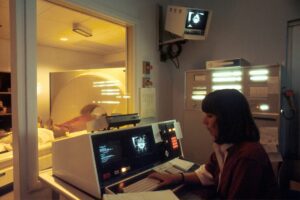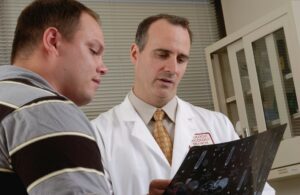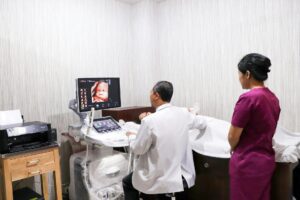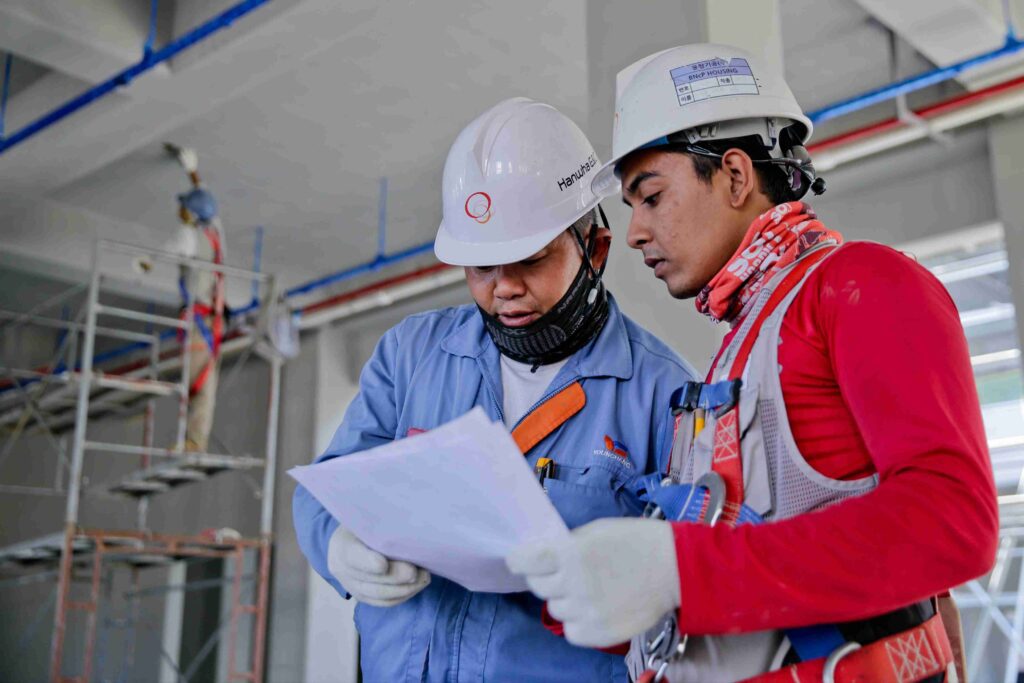 In the healthcare industry, radiology tech jobs can offer a chance to support people while having a profitable career. A medical worker who does different diagnostic imaging tests in a medical setting is called a radiologic technologist, or simply a radiology tech. A radiologic technician may be in charge of diagnostic imaging tests such as magnetic resonance imaging (MRI), computer tomography (CT) scans, and X-rays. Certain radiologic technologists may choose to specialize in imaging methods such as cardiovascular-interventional radiography, sonography, or mammography. After completing an imaging test with a patient, the technologist collaborates closely with the radiologist, a medical professional specializing in medical imaging, to analyze the test results.
In the healthcare industry, radiology tech jobs can offer a chance to support people while having a profitable career. A medical worker who does different diagnostic imaging tests in a medical setting is called a radiologic technologist, or simply a radiology tech. A radiologic technician may be in charge of diagnostic imaging tests such as magnetic resonance imaging (MRI), computer tomography (CT) scans, and X-rays. Certain radiologic technologists may choose to specialize in imaging methods such as cardiovascular-interventional radiography, sonography, or mammography. After completing an imaging test with a patient, the technologist collaborates closely with the radiologist, a medical professional specializing in medical imaging, to analyze the test results.
Best Highest-Paying Radiology Tech Jobs in the USA
 The field of medical imaging has a profound influence and is personally fulfilling. One of the many alluring advantages for professionals is the chance to collaborate closely with patients and positively influence their health and well-being. Beyond this, the allure of a steady career path and high pay cannot be denied. Upon receiving excellent instruction and gaining a few years of experience, both ought to be easily accessible. You should approach this field with confidence in your employment chances if earning potential is your main focus. Although earnings might vary significantly depending on a number of factors, including geographic area, education, experience, and specialty, it is undeniable that working in radiology can lead to a comfortable living.
The field of medical imaging has a profound influence and is personally fulfilling. One of the many alluring advantages for professionals is the chance to collaborate closely with patients and positively influence their health and well-being. Beyond this, the allure of a steady career path and high pay cannot be denied. Upon receiving excellent instruction and gaining a few years of experience, both ought to be easily accessible. You should approach this field with confidence in your employment chances if earning potential is your main focus. Although earnings might vary significantly depending on a number of factors, including geographic area, education, experience, and specialty, it is undeniable that working in radiology can lead to a comfortable living.
Read About Phlebotomist Jobs in the USA
-
Technologist in Nuclear Medicine
Salary Range: $54,000–$124,000
Nuclear medicine techs position patients for imaging, prepare and deliver radiopharmaceuticals (agents containing trace amounts of radioactive materials), and use specialized cameras and computers that generate diagnostic images. These pictures aid medical professionals in the diagnosis and treatment of wounds and illnesses. In hospitals and clinical settings, nuclear medicine technologists operate on both adult and pediatric patients, performing general, cardiac, and oncologic procedures. Additionally, nuclear medicine technologists may be employed in PET (positron emission tomography), administration, research, and education.
Because they deal directly with patients, nuclear medicine technologists need to be skilled in patient care and able to calm patients by explaining operations. They also need to be well-versed in radiopharmacy, clinical procedures, and radiation safety rules and procedures. A licensed medical professional, usually a radiologist or cardiologist, oversees the work of nuclear medicine technologists. The American Registry of Radiologic Technologists® (ARRT®) or the Nuclear Medicine Technology Certification Board (NMTCB) are two organizations that certify nuclear medicine technologists.
-
Interventional Radiological Technologist
Salary Range: $54,000 – $119,000
Focused on minimally invasive procedures, interventional radiology is a complex field that may require a wide range of imaging support, such as CT, ultrasounds, and fluoroscopy. The IR technologist’s job is to help with diagnostic and minimally invasive procedures, such as angioplasty, stent placement, embolization, abscess drainage, and biopsies, to help patients avoid more invasive and extensive surgeries. The IR technologist must use “sterile” techniques similar to those used in the operating room, and their high compensation is a reflection of the wide range of knowledge needed, as well as the requirement to earn multiple credentials, continuing education, or degrees.
-
Ultrasound technologist (diagnostic medical sonographer)
Salary Range: $52,000 to $104,000
Ultrasound imaging technology, which focuses sound waves to produce images of the inside of the body, is used by diagnostic medical sonographers. The duties of a diagnostic medical sonographer and an ultrasound technologist are similar in many respects. Although pay can be considerable, it varies depending on the specialty; diagnostic neurosonographers and other specialists like vascular and breast ultrasonographers frequently earn significantly more. The environment has an impact as well; outpatient facilities offer the highest salaries, whereas labs, hospitals, and tiny clinics could offer lower annual salaries.
Read also: Healthcare Administration Jobs in the USA
-
Technologist in Cardiology
Salary Range: $46,000 to $103,000
In a cardiac cath lab, cardiovascular technologists help doctors with radiologic imaging of heart and vascular procedures. These workers often earn slightly less for positions based in doctors’ offices or even the majority of hospitals, but they fetch better compensation in diagnostic labs and outpatient centers.
-
Technologist in Magnetic Resonance Imaging (MRI)
Salary Range: $50,000 to $94,000
Working with a wide range of sophisticated imaging tests, such as breast imaging, functional brain imaging, and cardiac imaging, presents problems for MRI technologists. MRI is a method that produces fine-grained images of the body’s organs and tissues by using different magnetic fields and radio pulses. For fine-grained pictures of the breast, brain, spine, and soft tissues, a doctor might prescribe an MRI.
The physics and principles of cross-sectional anatomy, IV contrast delivery, and magnetic resonance imaging must all be thoroughly understood by technologists. MRI technologists need to be good communicators, grasp the significance of the screening process and safety requirements, and adhere to MRI safety protocols because they deal directly with patients.
-
Technician in Positron Emission Tomography (PET) |
Salary Range: $46,000 to $91,000
Radioactive medicines called tracers are used in positron emission tomography (PET), a field of nuclear medicine that offers information on metabolic activity. PET technologists administer these and offer useful information about the functioning of different tissues and organs. The typically high compensation for this role is a reflection of the extensive knowledge technologists need to have, particularly about the rates at which various body regions absorb information.
-
Vascular Technologist
Salary Range: $49,000 to $89,000
Vascular technologists conduct ultrasounds and other testing as vital components of larger teams of doctors or surgeons who specialize in vascular health. Their primary objective is frequently to find clots or obstructions in the veins and arteries. These technicians can also detect malignancies, decreased blood flow, or narrowing veins through specialized ultrasound scanning.
It should come as no surprise that this position is in high demand, given the startlingly high rates of cardiac disease that exist today and the evidence-based significance of early detection. As a result, pay is frequently excellent and may rise further as vascular teams need more help from highly skilled technologists.
-
Computed Tomography (CT) Technologist
Salary Range: $47,000 to $89,000
To produce high-quality photographs, this specialization requires both a thorough understanding of anatomical features and the ability to place patients correctly. In addition to the vast amount of knowledge that technicians need to have, the urgency that occasionally accompanies these scans in emergency care circumstances also influences the wage range for this specialization.
Using advanced computer technology, a sequence of X-ray images captured from various angles is combined to create computed tomography (CT) scans. Compared to traditional radiography, CT scan images are far more detailed and can be converted into three-dimensional (3D) images. A CT technician can do scans on any portion of the body to aid in the diagnosis of acute illnesses or injuries. CT techs frequently help doctors with biopsies and peripheral vascular exams and need to be well-versed in cross-sectional anatomy and contrast delivery. Because CT exams are emergent, CT technologists frequently operate in hectic settings, need to be able to act appropriately when necessary, and are “on call” to report for duty at any time, all of which greatly raise their base pay.
-
Mammography Technologist
Salary Range: $41,000 to $87,000
Mammography techs must maintain a high level of positioning precision while working closely with patients to execute screening and diagnostic mammography treatments. Because it necessitates a high degree of technical proficiency, interpersonal skills, and a passion for mammography, mammography is a distinct modality in the field of radiology. The only radiological test that a woman can self-refer for is a screening mammography. Because of the nature of the examination, patients frequently experience high levels of anxiety. The mammographer’s job is to make the patient feel comfortable while always getting the best exam.
Additionally, mammography technologists need to be well-versed in accreditation rules, the intricacies of state and federal laws, and quality assurance and control needs. With further education, they can help doctors do stereotactic breast biopsies, also known as mammography-guided breast biopsies. Before performing mammography operations, a person must fulfill the necessary clinical and educational criteria. Mammographers, who work in the field of radiology that is frequently referred to as “women’s imaging,” might improve their abilities and marketability by obtaining certification in bone densitometry and breast ultrasonography.
Radiology Tech Jobs Salary in the United States
 In the United States, radiologists make an average of $353,960 per year, or $170.17 per hour. With an hourly mean wage of $209.02 and an annual mean wage of $434,770, radiography jobs at Outpatient Care Centers pay the highest wages, even though the majority of radiologists in the country work for Offices of Physicians. Both the availability of jobs and pay are significantly influenced by location. The states with the highest employment rates are Massachusetts and California; South Dakota is the highest-paid state, followed by Arizona and Wisconsin.
In the United States, radiologists make an average of $353,960 per year, or $170.17 per hour. With an hourly mean wage of $209.02 and an annual mean wage of $434,770, radiography jobs at Outpatient Care Centers pay the highest wages, even though the majority of radiologists in the country work for Offices of Physicians. Both the availability of jobs and pay are significantly influenced by location. The states with the highest employment rates are Massachusetts and California; South Dakota is the highest-paid state, followed by Arizona and Wisconsin.
The average salary for radiologic technologists and technicians is $75,250 per year, or $36.18 per hour. Hospitals employ the majority of radiologic technologists. However, a sizable portion of them are also employed by diagnostic labs and doctors’ clinics. Remarkably, with an average yearly salary of $89,490, outpatient care facilities provide the greatest average compensation. California is at the top of the salary scale, followed by Massachusetts and Hawaii, even though Texas and California have the largest employment rates.
Read Also: Workers’ Compensation in the USA
Can Artificial Intelligence Replace Radiologists?
AI-assisted radiologists are more accurate than those who work alone, according to studies. Consider AI to be your super-powered helper, not a substitute for you. It is excellent at analyzing vast volumes of data and identifying trends that humans might overlook. Imagine AI identifying possible problems in a scan so you may concentrate on the intricate instances that require your knowledge. Better patient care and quicker diagnoses are the results of this. Because of liability concerns, radiologists may now double-check every AI finding. That might outweigh the advantages of less work and burnout. A real collaboration in which AI takes care of the hard lifting, allowing you to concentrate on clinical correlation, patient engagement, and utilizing your judgment to direct treatment areas in which human intelligence still holds sway.
Is Radiology a Good Career?
 A career in radiology can be challenging, but it can also be quite fulfilling. Interpreting intricate medical imaging, making important decisions, and keeping up with the most recent technological developments are all part of this line of work. The intricacy of the situations and the requirement for accuracy can make the demands high for individuals in high-paying radiology positions. These are radiologists and specialty positions like interventional radiology technologists or MSK radiology (musculoskeletal radiology). Depending on the function, the career’s level of difficulty varies. For example, working remotely in radiology can be flexible. However, it can also provide difficulties when it comes to working independently and handling a varied caseload.
A career in radiology can be challenging, but it can also be quite fulfilling. Interpreting intricate medical imaging, making important decisions, and keeping up with the most recent technological developments are all part of this line of work. The intricacy of the situations and the requirement for accuracy can make the demands high for individuals in high-paying radiology positions. These are radiologists and specialty positions like interventional radiology technologists or MSK radiology (musculoskeletal radiology). Depending on the function, the career’s level of difficulty varies. For example, working remotely in radiology can be flexible. However, it can also provide difficulties when it comes to working independently and handling a varied caseload.
Similar to this, jobs in medical imaging include a variety of roles, such as a tomography technologist, each with unique duties and difficulties. As a result of the rigorous nature of the work, radiology positions and radiologists typically pay more than those in other professions. All things considered, radiology and medical imaging careers can be difficult, but they can pay well and have a significant professional influence.
Read Also: Nursing Jobs in the USA with Visa Sponsorship
Highest-Paying States for Radiology Tech Jobs in the USA
-
Arizona
Radiology tech jobs available: 746 positions.
Average pay per year: $69,630.
Lowest 10% earning: $42,000.
Highest 10% earning: $115,000.
Quotient of Location: 1.23
-
Massachusetts
Radiology tech jobs available: 1,186 positions.
Average pay per year: $68,001.
Lowest 10% earning: $39,000.
Highest 10% earning: $115,000.
Quotient of Location: 1.25
-
New Hampshire
Radiology tech jobs available: 221 positions.
Average pay per year: $66,301.
Lowest 10% earning: $39,000.
Highest 10% earning: $111,000.
Quotient of Location: 1.22
-
Connecticut
Radiology tech jobs available: 366 positions
Average pay per year: $70,477.
Lowest 10% earning: $40,000.
Highest 10% earning: $121,000.
Quotient of Location: 1.07
-
New Jersey
Radiology tech jobs available: 1,097 positions
Average pay per year: $66,069
Lowest 10% earning: $38,000
Highest 10% earning: $113,000.
Quotient of Location: 1.34
-
Washington
Radiology tech jobs available: 838 positions
Average pay per year: $64,756.
Lowest 10% earning: $40,000.
Highest 10% earning: $104,000.
Quotient of Location: 1.11
-
Rhode Island
Radiology tech jobs available: 143 positions
Average pay per year: $62,050.
Lowest 10% earning: $36,000.
Highest 10% earning: $106,000.
Quotient of Location: 1.14
-
California
Radiology tech jobs available: 1,960 positions
Average pay per year: $102,918.
Lowest 10% earning: $61,000.
Highest 10% earning: $172,000.
Quotient of Location: 0.65
-
Oregon
Radiology tech jobs available: 419 positions
Average pay per year: $64,821.
Lowest 10% earning: $39,000.
Highest 10% earning: $106,000.
Quotient of Location: 0.98
-
New York
Radiology tech jobs: 1,442 positions
Average pay per year: $65,057.
Lowest 10% earning: $37,000.
Highest 10% earning: $112,000.
Quotient of Location: 1.09
Places to Find Radiology Tech Jobs
There are numerous employment options for radiology technicians. Furthermore, this can provide both an engaging work environment and a rewarding career experience. Additionally, radiology technicians most frequently work in medical centers. They also work in hospitals, outpatient clinics, and doctors’ offices. To work at more specialized medical facilities, radiologic technologists can also decide to specialize in a particular discipline, such as gynecologic ultrasonography or bone densitometry. These are some of the most common locations for radiology technicians to work.
-
Medical facilities
In 2018, sixty percent of radiologic technologists worked in hospitals, including private, state, and local facilities. Radiology technologists are essential to hospitals and offer patients a range of imaging examination services. Throughout the diagnosis and treatment of a patient’s medical conditions, these experts also help the patient’s care team. This may consist of physicians, nurses, and radiologists. In a hospital, a radiology technician can work in a certain department. Radiology technologists work in critical care units, operating rooms, and emergency rooms.
-
Centers for Therapy
Moreover, radiologic technologists frequently work in therapy facilities. Radiation oncology, also therapeutic radiology, is offered by many therapy clinics that hire radiologic technologists. Radiation treatment is used in these services to treat cancer and other illnesses. Usually called radiation oncology technicians, radiology technicians who operate in cancer therapy centers are in charge of giving patients radiation therapy. Also, they guarantee that the right dosage is administered and that the patient is comfortable during the therapy administration process. Technologists will work one-on-one with each patient before, during, and after treatment. The facility’s oncology team, which typically includes a primary care physician, a medical physicist, a radiation oncologist, and a dosimetrist, will also collaborate closely with the radiology tech. Technicians are usually the most approachable component of the patient’s oncology team. They may work with the same group of patients every day for weeks during their treatment.
-
Offices of Physicians
In a doctor’s office, a radiologic technologist will carry out imaging procedures to assist the physician in patient diagnosis and care. Some medical offices specialize in obstetrics. For example, the radiologic technician must be good at operating the equipment for that expertise. Depending on the facility’s size and staffing levels, radiology technicians may perform tasks outside of their direct job description. This is similar to private imaging centers and outpatient clinics.
-
Private Imaging Facilities
Medical institutions that exclusively concentrate on offering diagnostic imaging services to patients are private diagnostic imaging centers or independent imaging centers. Private imaging centers solely offer imaging services, although hospitals, private medical institutions, and outpatient clinics also provide other medical services. Since they avoid the lengthy queues that are sometimes in other medical facilities, such as hospitals, many patients find these sites to be more convenient. Radiologic technologists working in imaging centers must be knowledgeable about the equipment and procedures. This is because these facilities often provide a variety of imaging services.
-
Private Medical Facilities
Many of the tasks that radiology technologists carry out in hospitals and outpatient clinics can also be performed in private healthcare facilities. To work at a private health care facility, a radiology technician must be educated in that field. This is because private health care centers may specialize in that area. For instance, radiologic technologists with expertise in vascular interventional obstetric sonography, echocardiography, Doppler sonography, musculoskeletal sonography, and gynecologic ultrasonography work in private gynecological medical facilities. All of these imaging tests are necessary for other standard gynecological exams and to track the development of pregnancy.
Read Also: Healthcare Administration Jobs in the USA
Conclusion
If you are searching for a healthcare career that combines technology and potential, radiology tech jobs may be the right fit. This healthcare career offers good earning potential. With radiology tech jobs, you play an important role in the patient’s life. With the job growth, there will be more opportunities to work and earn in the coming years.





